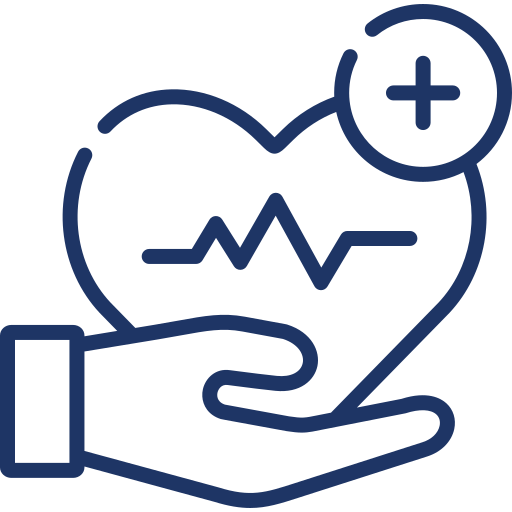What does a DOT Physical consist of?
Description: DOT Physical can be anxiety provoking. What does a DOT Physical consist of? What should drivers expect at a DOT Physical? This page has answers to all your questions that will help you prepare and understand this process better. Whether this is your first DOT Physical or a renewal, read this to gain knowledge so you know what to expect.
The DOT Physical involves performing a
Vision Test
Hearing Test
Checking your blood pressure and heart rate.
Checking your Urine
A Physical Examination
The DOT physical exam may cover some or all of the following depending upon your medical history, age and other factors.
General appearance
Eyes (cornea, eye movements, presence of cataracts etc.)
Ears (scarring or damage to ear drums etc.)
Neck (limited movements, any scars, thyroid swelling)
Mouth and throat (to look for airway problems and breathing)
Heart (any extra sounds or presence of pacemaker etc.)
Lungs and chest (any abnormal breathing sounds etc.)
Abdomen (enlarged liver, presence of hernias etc.)
Vascular (abnormal pulse or vein abnormalities etc.)
Extremities (limb injuries, missing fingers or toes, surgical scars etc.)
Spine (surgical scars, limited movement etc.)
Neurological (balance, coordination, gait, issues with muscle strength or spinal reflexes)
The DOT physical is a basic fitness exam. The examiner is assessing your overall health. Some medical conditions that the DOT Physical assesses are:
Vision problems (inability to see clearly)
Blood pressure problems (Blood pressure is the commonest uncontrolled medical problem discovered during a DOT Physical exam)
Hearing issues (one or both ears, wax in the ears is the commonest issue discovered during a DOT Physical)
Sleep Apnea (another common issue discovered in drivers with obesity)
Breathing problems (from smoking)
Behavioral health / mental health issues
Diabetes
Medical issues from alcohol or drug abuse
Missing toes or fingers from amputation
Back or joint surgeries (shoulders, knees and hip)
Stroke related deficits, Epilepsy or seizure issues
Undetected heart disease (murmurs, heart rate or heart rhythm issues)
DOT Physicals do not need drug testing. However, the company you work for may require a drug screening.
The medical guidelines in the Federal Motor Carrier Safety Regulations (FMCSRs) allow drivers with a BP of less than 140/90 to be medically certified to drive for a two-year period.
The DOT Physical requirement is for drivers to be able to perceive what is known as a “forced whisper” at a distance of 5 feet or less, with or without a hearing aid. This standard equates to an average hearing loss in the better ear of less than 40 decibels (dB).
The DOT Physical requires that the Urine be checked for sugar, protein, blood and specific gravity (density of urine). If the urine shows sugar, it means you have diabetes. If the urine shows blood, it means you have bleeding in your urinary tract from an infection, stone or tumor and need further testing. If there is protein in your urine, it means you may have undetected kidney disease. If you drink too much water, your urine will be dilute and have a low specific gravity, telling the examiner that the sample isn’t the best one. It is good to drink 1-2 glasses of water before you come for the DOT Physical exam so you can provide a urine specimen. Many facilities can also tell the temperature of the urine specimen to ensure it was a proper specimen.
A DOT Physical is deemed completed with a pass or fail result. If you abandon the DOT Physical at any time after you have checked in, it is considered a failed DOT Physical. Whether you pass or fail the DOT Physical, the DOT examiner will fill out the Medical Examiner’s Certificate and give it to you. If you failed the DOT Physical, the examiner will discuss with you the reasons for the failure and what needs to be done before you can become eligible for the DOT certificate. This Medical Examination Report for Commercial Driver Fitness Determination will then be submitted to the federal government electronically.
The DOT Physical in some drivers cannot be completed at the initial visit because the federal guidelines require further paperwork to be completed by a specialist and brought back to the DOT Medical Examiner. These drivers can sometimes obtain an “exemption” for their medical condition. These exemptions are valid only for a year at a time so the DOT Examiner too can only provide a maximum certification for one year.
For many medical conditions, the federal regulations require special forms to be completed by a specialist. The driver may qualify for an exemption and get certified for up to one year at a time if they have certain medical conditions. The following medical exemptions are currently available:
DOT Physical – Diabetes Exemption Forms
- Diabetes Exemption Application
- Quartely Endocrinologist Evaluation Form for Already Exempted Drivers
- Annual Diabetes Assessment Package for Already Exempted Drivers
DOT Physical – Vision Exemption Forms
DOT Physical – Hearing Loss Exemption Forms
DOT Physical – Seizure Exemption Forms
DOT Physical – Skill Performance Evaluation (SPE) For Drivers with Physical Impairments







